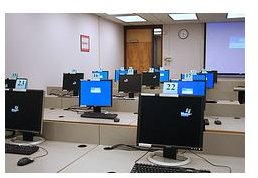Differentiation in the Classroom and Differentiation Student Activities
Tic Tac Toe Sheets
An easy and creative way to differentiate instructions for gifted students in the regular classroom is to create a “tic-tac-toe board” that focuses on a certain area of study. You can create one tic-tac-toe board for the entire class, but the better way to differentiate is to create two or three different boards for students who are working at different levels.
Basically, a differentiation tic-tac-toe board is a nine-square board with one activity, book, or requirement in each square. Students have to make a tic-tac-toe (three in a row) before they can turn in their activities and the board. For example, in science, let’s say you are studying habitats. An activity on a gifted student’s tic-tac-toe board may be – create a diorama of any of the following habitats: desert, rainforest, or arctic tundra. Please research the types of animals and vegetation found in these areas to make your project as realistic as possible.
On a student’s tic-tac-toe sheet who is working below grade level, you might have – create a diorama of a forest habitat (or even the habitat you live in.) Students only have one choice, it is most likely familiar to them, and they don’t have to do research.
Since this diorama activity is listed in the tic-tac-toe board, students may not choose this activity. But all activities should challenge students and create learning opportunities for them on their levels.
Literature Study Groups
Differentiating instruction for gifted students in the regular classroom can also take the form of literature study groups. Basically, the teacher picks a theme or topic for the reading groups such as books about friendship or the United States Civil War. Then she finds three or four books that fit the theme and are on various reading levels.
The gifted students may be reading a book that is two or three grade levels above, whereas other students will read one on grade level. The teacher assigns certain pages to be read independently each week as well as making some writing assignments to go with the assigned pages. Each week, the teacher meets with the group to discuss the pages and their writing assignments. Discussion themes and questions are another chance for the teacher to differentiate instruction for gifted students.
Using Technology
If you have technology available to you, this is a great way to cater for gifted students in the regular classroom. For example, you are teaching third grade, and your math unit is focused on understanding what multiplication means and memorizing multiplication facts. Some of your gifted students have already mastered their multiplication tables, and so the information you are presenting to the entire class is boring to them.
These students could use computers and math game websites to practice harder multiplication problems or focus on another area where they are not as strong, such as fractions. Of course, your other students will also want computer time, and many of these same math sites have simple multiplication fact practice, too. Here are a couple sites to check out:
This post is part of the series: Differentiation in K-5
If you are interested in using differentiation techniques in your classroom to reach all learners and give them meaningful educational experiences, then these articles will provide tips and ideas to get you started and keep you going.
